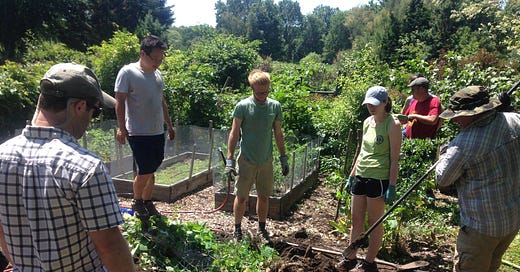America’s Oldest Victory Garden and a Model for Community Engagement
“You can bury a lot of troubles digging in the dirt.”
— Anonymous Victory Gardener, 1943
Tucked inside Boston’s iconic Emerald Necklace park system lies a garden with roots that stretch back more than 80 years. The Fenway Victory Gardens, established in 1942 during World War II, remain the oldest continuously operating victory gardens in the United States—a living monument to resilience, community, and civic purpose.
Spanning seven and a half acres of lush greenery and winding paths, more than 375 local gardeners tend to over 500 plots, each one a reflection of its keeper’s care, culture, and creativity. But these are more than productive green spaces—they’re intergenerational classrooms, sanctuaries, and testaments to what a committed community can achieve when it grows together.
From Wartime Effort to Year-Round Stewardship
The gardens were born out of necessity. As the U.S. entered WWII, food shortages and rationing led the government to call on citizens to grow their own produce. Boston answered by converting public land into garden plots—and residents responded with enthusiasm.
While most victory gardens disappeared after the war, Fenway endured. And it didn’t just survive—it thrived. By 1944, the Fenway Garden Society had formed to protect and manage the space. Today, it remains a volunteer-run organization committed to sustainable gardening, urban ecology, and community engagement.
Volunteers organize workdays, maintain shared paths and compost areas, and ensure the gardens stay accessible, beautiful, and safe—a model of grassroots environmental stewardship in action.
Why Fenway is a National Treasure
Historic Legacy
Fenway is the only remaining WWII victory garden still on its original site, a unique piece of American and urban agricultural history.Inclusive Community
Gardeners represent Boston’s diverse population—seniors, students, families, and newcomers alike. Many plots showcase cultural heritage, growing vegetables from around the world.Environmental Commitment
Gardeners use composting, organic methods, native plantings, and pollinator zones to model ecological responsibility right in the heart of the city.Educational Potential
Seasonal tours, volunteer opportunities, and site visits make Fenway a perfect case study in place-based education—connecting history, civics, science, and art.
Photo credit: Fenway Victory Gardens Facebook page
PBL Possibilities Inspired by Fenway
History + Civic Engagement: Research WWII victory gardens and design a proposal for a modern version in your school or town.
Science + Sustainability: Study composting, pollinator-friendly planting, or native vs. invasive species in urban gardens.
Art + Culture: Capture gardeners’ stories through oral history, photography, or garden-based storytelling.
Math + Design: Create scaled blueprints for a school garden, planning for crop rotation and seasonal layouts.
A Victory That Keeps Growing
Originally created to support the nation in a time of crisis, the Fenway Victory Gardens now serve a different kind of mission—cultivating community resilience, wellness, and connection.
As your students consider their role in the world, few places speak more clearly to the power of local action than Fenway. It’s proof that when people put their hands in the soil, together, they can grow a better future.



